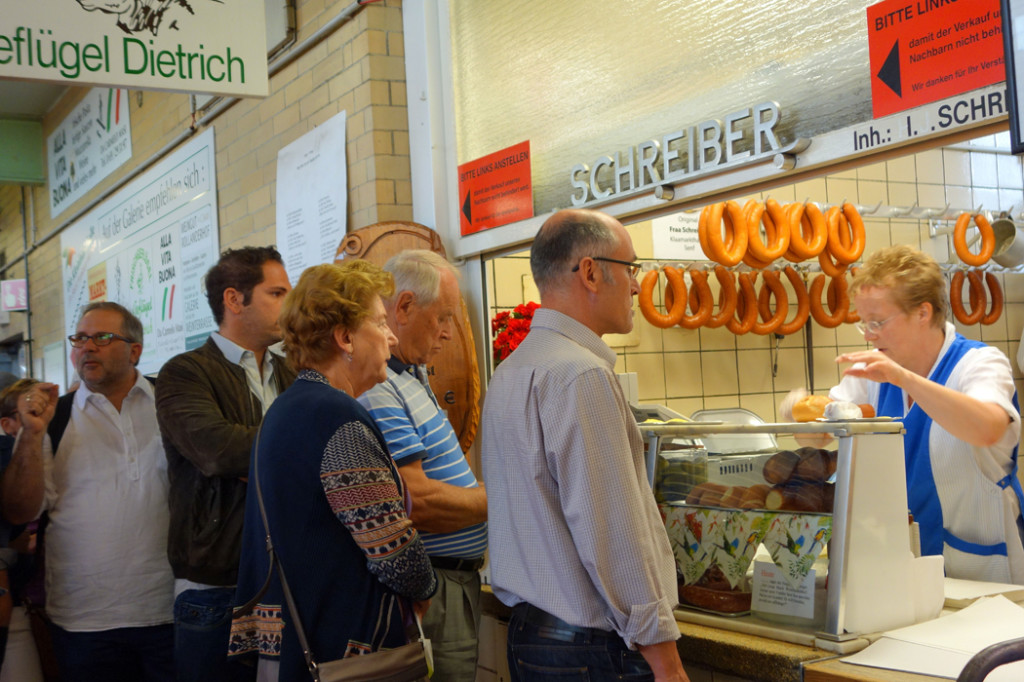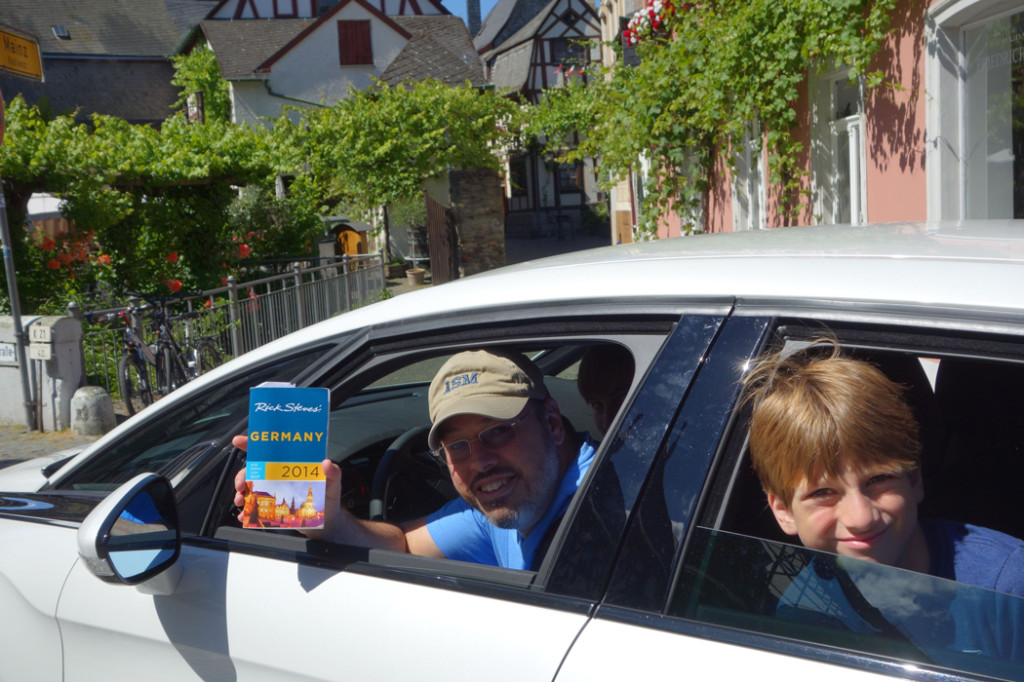Frankfurt has long been Germany’s trade center. And with trade comes prostitution and drugs. The city takes a pragmatic, compassionate, and seemingly effective “harm reduction” approach to both of these challenges.
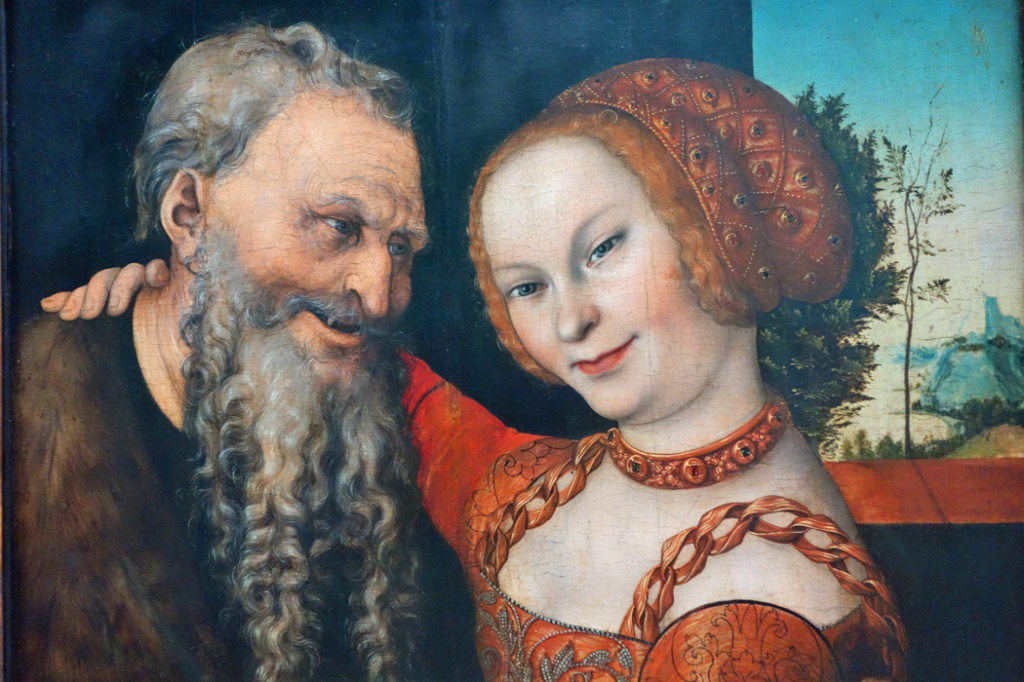
This painting is a thought-provoking reminder that the phenomenon of wealthy old men setting their sights on younger women is nothing new…especially in a trading center like Frankfurt. Ever since the Middle Ages, Frankfurt’s thriving prostitution industry has gone hand-in-hand with its trade fairs. Today, prostitution thrives with the convention center. Like hotels, prostitutes double their prices during big trade fairs. Sex workers note that business varies with the theme of the trade show: While the auto show is boom time, and the butchers’ convention is famously hungry, they complain that Frankfurt’s massive book fair is a bust.
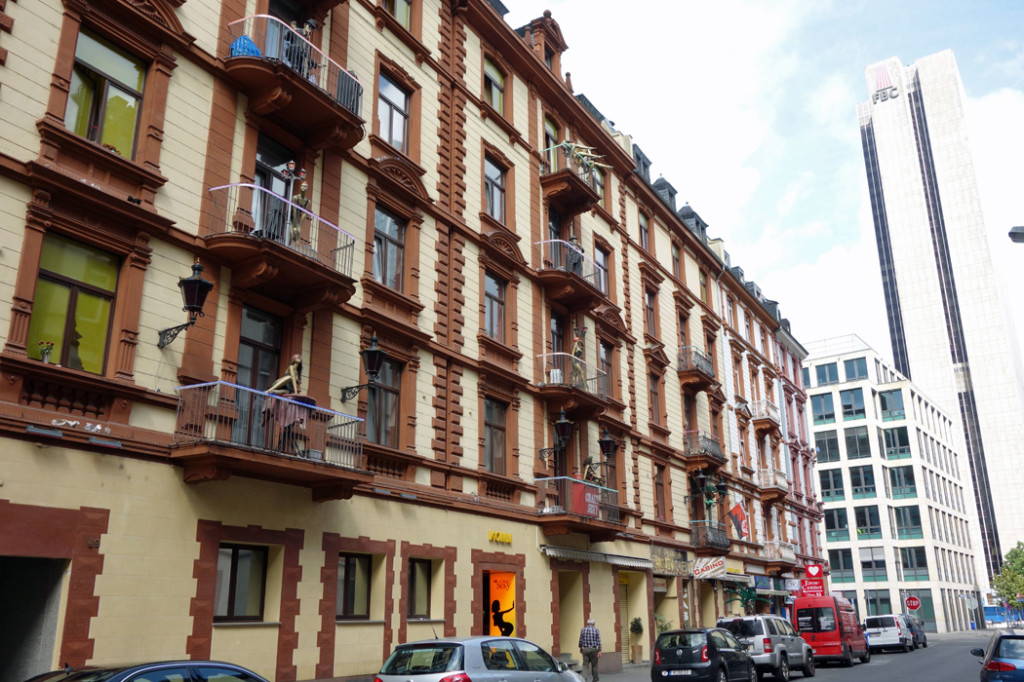
Prostitution is big business here, and perfectly legal since 2002. German sex workers get health care just like any other workers, and pay taxes (on an estimated €14 billion of declared income each year). As I marveled the poignant sight of high-rise banks and office buildings towering above Frankfurt’s brothels, my guide said, “Prostitutes, who pay about €130 a day to rent their rooms, cover their rent by the end of the businessmen’s lunch break.”
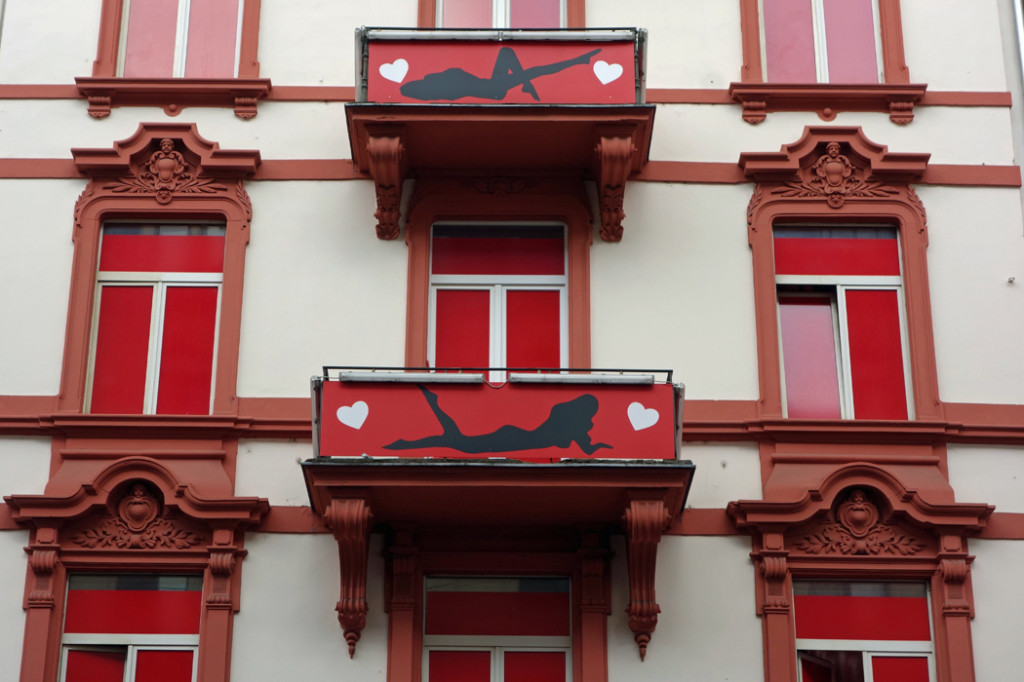
A couple of blocks in front of Frankfurt’s train station, you’ll find a row of high-rise brothels, or “eros towers.” With all the businessmen coming into town, there’s no way to outlaw prostitution. So the city has decided to contain and control prostitution into what it calls a “tolerance area.” Within about a block of here are about 20 of these five-story brothels in original late-19th-century apartment flats — each filled with prostitutes. The sex workers, who are mostly from Eastern Europe, Latin America, and Thailand (and only about 2 percent German), charge around €20. These women rent their rooms and essentially run their own little businesses. Crazy Sexy is biggest of these brothels, with 180 rooms (51 Elbestrasse). The first three floors are female sex workers, while transvestites occupy the fourth floor. (My guide said, “Gender reassignment surgery is expensive, and many of these people are saving up for their operation.”)
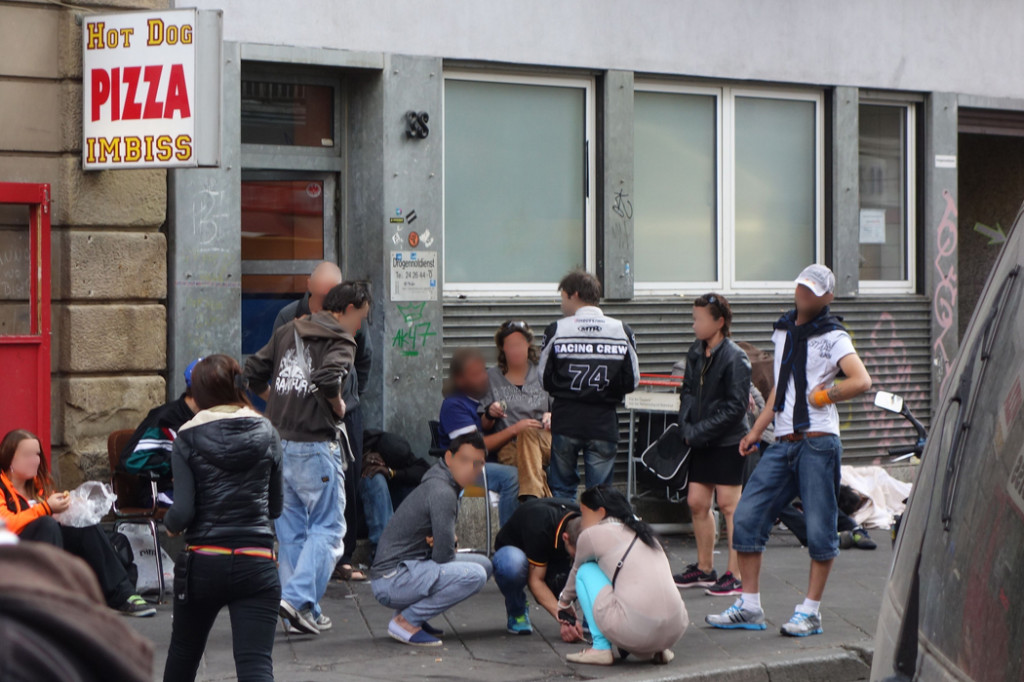
Walking the streets of Frankfurt, you may see a gang of junkies congregating at a government-funded heroin maintenance clinic (also known as a “Café Fix”). In the 1980s, Frankfurt was plagued by one of the largest open drug scenes in Europe. Its parks (and police) were overwhelmed with needle addicts. Then Frankfurt decided to get creative, take the crime out of the equation, and go for pragmatic harm reduction. In 1992, Frankfurt began offering “pump rooms” to its hard-drug users. The idea: provide a safe haven for addicts (mostly heroin, but also crack and methadone) to hygienically maintain their habit. Heroin addicts would still buy their stuff on the street, but inject here with clean needles, medical help standing by, and a place to stay if needed. It’s strictly not for first-time users, and no dealing or sharing of drugs is allowed. These centers provide a safe and caring place for addicts — who are considered not criminals, but sick people — to maintain their habit and get counseling and medical help. Two decades later, overdose deaths are down 75 percent, and there’s never been a death in a “drug consumption room.” Locals consider the program a success and are accustomed to seeing groups of junkies hanging out in front of these places. While unsightly, the compassionate “harm reduction” approach much of Europe uses to deal with this problem saves lives. Meanwhile, the USA continues to suffer double the heroin-related deaths as Europe (despite Europe’s much larger population).


